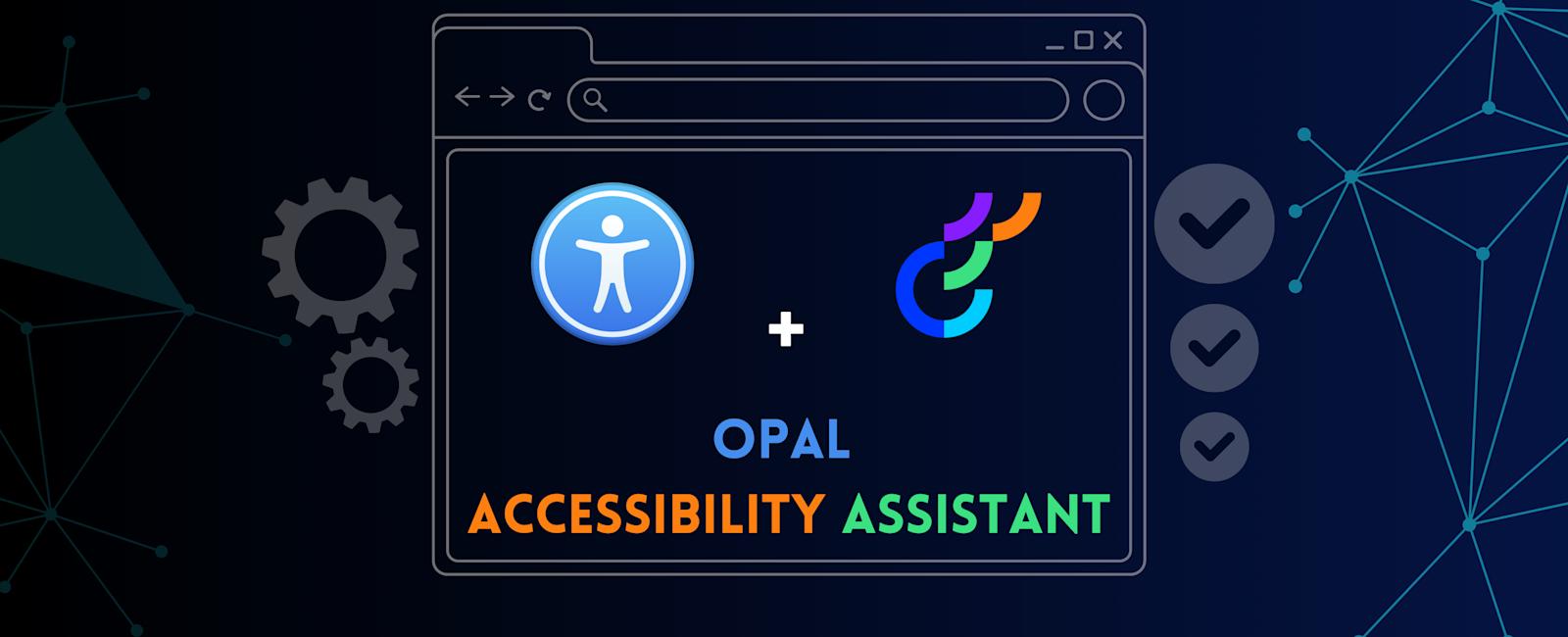Introducing the Opal Accessibility Assistant: Making Digital Experiences Inclusive

Introducing the Opal Accessibility Assistant: Making Digital Experiences Inclusive
Accessibility is no longer optional — it’s a responsibility. With over a billion people worldwide living with some form of disability, every piece of content we publish has the potential to either break down barriers or build them. Yet, ensuring accessibility compliance often feels complicated, time-consuming, and overly technical for content teams.
That’s the challenge we set out to solve with the Opal Accessibility Assistant.
The Challenge
Most accessibility checks happen after content has been created, published, or tested in staging. By then, fixing issues often requires additional development cycles, leading to delays and higher costs.
Content authors, editors, and marketers — the people who create and publish daily — rarely have the tools or expertise to validate accessibility while they’re working.
We needed a solution that:
- Integrates directly into the content creation process
- Provides clear, actionable feedback without requiring deep technical knowledge
- Helps organizations achieve WCAG 2.1 compliance without slowing down publishing
Our Solution: Opal Accessibility Assistant
The Opal Accessibility Assistant is a tool built to seamlessly integrate with the Opal content workflow. With a single click, authors can scan their content and instantly receive accessibility insights.
The assistant highlights issues, ranks them by severity, and provides guidance on how to resolve them — all before content goes live.
Think of it as a built-in accessibility coach that empowers every editor to create content that’s inclusive from the start.
Key Features
- Automated WCAG 2.1 AA checks covering contrast, heading hierarchy, ARIA roles, and more
- Seamless editor integration so authors don’t need to leave Opal
- Real-time validation with instant results
- Detailed reports with issue summaries, severity levels, and recommended fixes
- Next steps guidance to prioritize critical issues before publishing
- Exportable reports for QA teams and stakeholder reviews
How It Works
- Open any page in the Opal editor
- Launch the Accessibility Assistant
- Run a scan → see flagged issues categorized by severity
- Follow recommended fixes
- Re-scan to validate improvements
- Publish with confidence that your content is accessible
Under the Hood
The tool is powered by the axe-core accessibility engine, widely recognized as the industry standard. We’ve built it as an Opal Tools SDK integration, running serverless through Cloudflare Workers, ensuring it’s lightweight, secure, and scalable.
Reports are generated in HTML, Markdown, or PDF, making them easy to share with QA teams or compliance officers.
Why It Matters
- For content authors → accessibility testing is now part of their daily workflow, not an afterthought.
- For organizations → ensures compliance and reduces legal and reputational risk.
- For users → creates truly inclusive experiences that welcome everyone.
Looking Ahead
We see the Opal Accessibility Assistant as just the beginning. Our roadmap includes:
- AI-powered auto-fix suggestions
- Multilingual accessibility scanning
- Integration with CI/CD pipelines
- Organization-wide dashboards for accessibility health
Final Thoughts
Accessibility should never be treated as a checklist item at the end of a project. It should be embedded in the content creation process from the start. With the Opal Accessibility Assistant, we’re making that vision a reality — helping teams create content that is not only engaging but also inclusive and compliant.
Because when digital experiences are accessible, everyone wins.
Quick Links
Legal Stuff
